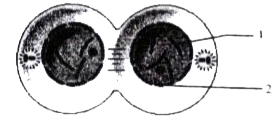What are the major divisions in the Plantae ? What is the basis for these divisions ?
Step-by-Step Solution:
1. Identify the Major Divisions in Plantae:
- The kingdom Plantae is divided into five major divisions:
1. Thalophyta
2. Bryophyta
3. Pteridophyta
4. Gymnosperms
5. Angiosperms
2. Understand the Basis for Divisions:
- The divisions in Plantae are based on several criteria:
1. Differentiation of Plant Body:
- Thalophyta: The plant body is non-differentiated, resembling a thallus (lump of cells) without true roots, stems, or leaves.
- Bryophyta: The plant body has structures resembling roots, stems, and leaves, but they are not true structures.
- Pteridophyta, Gymnosperms, and Angiosperms: These have a well-differentiated body with true roots, stems, and leaves.
2. Presence or Absence of Vascular Tissue:
- Thalophyta and Bryophyta lack vascular tissues (xylem and phloem).
- Pteridophyta, Gymnosperms, and Angiosperms possess vascular tissues for the conduction of water and minerals.
3. Seed Production:
- Thalophyta and Bryophyta do not produce seeds; they reproduce via spores.
- Pteridophyta, Gymnosperms, and Angiosperms produce seeds.
- Gymnosperms have naked seeds, while Angiosperms have seeds enclosed within fruits.
3. Summarize the Divisions and Their Characteristics:
- Thalophyta: Non-differentiated body, no vascular tissue, no seeds.
- Bryophyta: Differentiated body (not true), no vascular tissue, no seeds.
- Pteridophyta: Well-differentiated body, has vascular tissue, produces spores (no seeds).
- Gymnosperms: Well-differentiated body, has vascular tissue, produces naked seeds.
- Angiosperms: Well-differentiated body, has vascular tissue, produces seeds enclosed within fruits.
- The kingdom Plantae is divided into five major divisions:
1. Thalophyta
2. Bryophyta
3. Pteridophyta
4. Gymnosperms
5. Angiosperms
- The divisions in Plantae are based on several criteria:
1. Differentiation of Plant Body:
- Thalophyta: The plant body is non-differentiated, resembling a thallus (lump of cells) without true roots, stems, or leaves.
- Bryophyta: The plant body has structures resembling roots, stems, and leaves, but they are not true structures.
- Pteridophyta, Gymnosperms, and Angiosperms: These have a well-differentiated body with true roots, stems, and leaves.
- Thalophyta and Bryophyta lack vascular tissues (xylem and phloem).
- Pteridophyta, Gymnosperms, and Angiosperms possess vascular tissues for the conduction of water and minerals.
- Thalophyta and Bryophyta do not produce seeds; they reproduce via spores.
- Pteridophyta, Gymnosperms, and Angiosperms produce seeds.
- Gymnosperms have naked seeds, while Angiosperms have seeds enclosed within fruits.
- Thalophyta: Non-differentiated body, no vascular tissue, no seeds.
- Bryophyta: Differentiated body (not true), no vascular tissue, no seeds.
- Pteridophyta: Well-differentiated body, has vascular tissue, produces spores (no seeds).
- Gymnosperms: Well-differentiated body, has vascular tissue, produces naked seeds.
- Angiosperms: Well-differentiated body, has vascular tissue, produces seeds enclosed within fruits.
Topper's Solved these Questions
Similar Questions
What is the cause of cell division ?
View SolutionWhat is cell division ?
View SolutionStudy the diagram given below which represents a stage during the mitotic cell division and answer the questions that follow:

What is the technical term for the division of nucleus?
View SolutionIn meiosis, division is
View SolutionWhereas the number of chromosomes is reduced to half in first reduction division of meiosis, then what is the need for second mitotic division
View SolutionThe given diagram shows a stage during mitotic division in an animal cell:

In what two ways is mitotic division in an animal cell different from the mitotic division in a plant cell?
View SolutionWhen and where does meiotic division take place in cells? What is the significance of this type of cell division in the animal's life?
View SolutionIn a vernier calipers, N divisions of the main scale coincide with N+m divisions of the vernier scale. what is the value of m for which the instrument has minimum least count.
View SolutionIn a vernier callipers, N divisions of the main scale coincide with N+m divisions of the vernier scale. what is the value of m for which the instrument has minimum least count.
View SolutionOne cm on the main scale of vernier callipers is divided into ten equal parts. If 20 division of vernier scale coincide with 8 small divisions of the main scale. What will be the least count of callipers ?
View Solution
